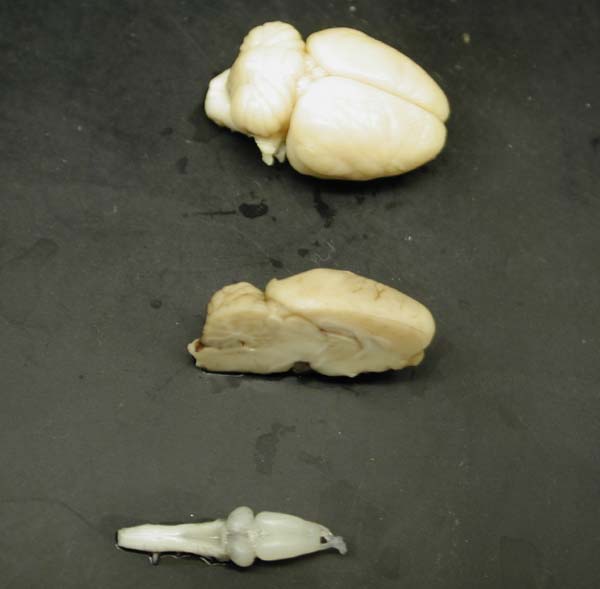Remote Ready Biology Learning Activities has 50 remote-ready activities, which work for either your classroom or remote teaching.
Serendip is an independent site partnering with faculty at multiple colleges and universities around the world. Happy exploring!
This web exhibit was first built in 2000 by Patricia Anne Kinser, Haverford College, under the direction of Paul Grobstein, Bryn Mawr College. The updated version of Comparative Neuroanatomy and Intelligence is now online at http://serendipstudio.org/exchange/brains. This old version has been archived in place, and will continue to be available for teachers and students who are using it. |
| After looking at all these sections and slides and close-ups of the various types of brains, what have we learned? What kinds of trends have we observed? What are we still curious about? When you saw the sagittal slices of all the brains, what did you notice? Comparing across the sections you probably noticed that there were some general differences between the brains (involving size, shapes of structures, etc). For example, it may seem easier to differentiate structures in the human brain as opposed to the rat brain. It has been found that as one ascends a phylogenetic sequence, there is clearer definition and demarcation of structures, almost as if the brain is better organized. Yet, the closer we got, especially when we made forebrain and hindbrain slices, the more you may have realized that the brains and their structures look quite similar. In other words, yes, there are differences between animals' brains but also deep and fundamental similarities. Here are some good picture to remind you:
As you see above, both the cat and monkey cerebellums look rather similar. The structure is located in similar places on each respective brain, above the brainstem, and is rather convuluted. Yet, there are also general differences that make it easy to differentiate one from another.
Another interesting comparison is between the rat and frog brains. Look and the picture below and notice any similarities and differences:
 This may be difficult for you to see due to the fuzziness of the photograph, but stick with me. The frog brain is on the bottom; the middle brain is a sagittal view of the rat brain; the top brain is a full view of a rat brain. Essentially, the frog brain resembles the basic structures of the rat brain, laid out flat. For example, you see the spinal cord leading to the brain stem and cerebellum and then the midbrain/forebrain structures. So, in this way, the rat and frog brains are quite similar. Yet, in the rat brain we find neocortex surrounding the mid- and forebrain, which we cannot see in a frog brain. Indeed, frogs do not have neocortex (remember- only mammals have this multi-layered structure). Want to go to a discussion about this? Click here. What if we look even closer, at the cellular level? What if we magnify these pictures so that we can see individual neurons?
| Forum | Brain and Behavior | Serendip Home | Send us your comments at Serendip © by Serendip 1994- - Last Modified: Wednesday, 02-May-2018 11:57:52 CDT |